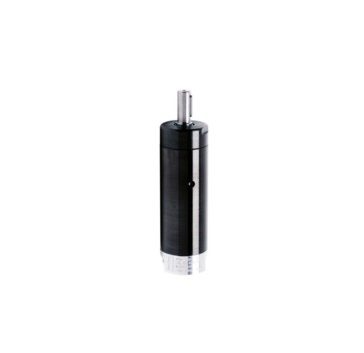Utilising their pneumatically powered vanes, Desoutter air motors deliver stall-resistant torque, which can be used to drive numerous industrially proportioned mechanical assemblies. The advantages of this design are clear. For instance, there are no sparks to worry about when air motors are on the job. Their prime mover duties rely only on the provision of pneumatic power, not interference-prone electrical signals.
Electrical Disadvantages: A Primer
Electricity isn’t quite the miracle power source we’ve all been told about. Strange transient spikes debilitate voltages and currents. Magnetic interference can further impact delicately balanced mechanical actuators, as can cross-talk noise and other undesirable disturbances. Of more concern, however, electrical systems generate sparks, and explosive atmospheres simply cannot tolerate such risk factors.
The Benefits of Desoutter Air Motors
There’s no sparks, just air pressure, so air motors can be installed on production lines that produce explosive vapours. They’re also rugged, which is a handy feature to have on call when a factory floor generates lots of muck. Just to illustrate that contention, take a look at the M16-KL series. Small and cylindrical, a high-performance drive shaft protrudes from one end of the motor. There are lubrication-free vanes mounted inside the compact tubular housing, which can be configured to rotate backwards or forwards. Fitted with a keyed or threaded shaft, they’re also universally adaptable, so system coupling problems are rare. Let’s check out some features on the following list:
• They’re ATEX (Rated to operate in explosion atmospheres) compliant
• Robust mechanical designs
• Stall resistant vanes
• Available in lubrication-less and stainless steel housings
• Simply will not overheat
• Arguably, Desoutter air motors are better than electric motors, at least in automated usage areas.
Fits the Toughest Production Line Applications
In a clean atmosphere, an oil-free, stainless steel air motor keeps clean-zone equipment in immaculate condition. Explosive atmospheres gain hazard protection when air powered drive systems operate without risk of overheating. In automated food processing plants, the regulation of one of two air valves varies radial speed and velocity. The two key motor parameters are directly proportionate, but they respond to two different valve properties. For speed control, the air flow is varied. Conversely, if torque variability is desired, the air pressure is regulated.
Pneumatic circuitry is used to perform the finitely adjustable speed and torque controlling actions here, so expect supply and exhaust throttling elements in the system, plus a number of return valves and similar process-regulating pneumatic components to appear in the control section. As for the air motors themselves, Desoutter technology provides a perfectly controllable drive actuation solution for any imaginable production environment, even those that contain explosive atmospheres.
For more information, download the air motors catalogue, visit our Desoutter page or contact us.


